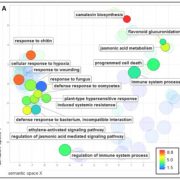
NO2 Enhances Pathogen Resistance
Blog, Plant Physiology, Plant Physiology: On The InsideNitrogen dioxide (NO2) forms in plants under stress conditions, but little is known about its
physiological functions. Using a variety of techniques, Mayer et al. (10.1104/pp.18.00704) have examined the effects of fumigating Arabidopsis with 10 ppm NO2 for 1 h, a treatment that does not cause
visible…
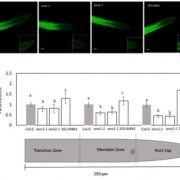
Annexins Facilitate Post-Phloem Sugar Transport
Blog, Plant Physiology, Plant Physiology: On The InsideBecause local sugar concentrations play a critical role in regulating root growth, it is important to learn more about the mechanisms that control sugar transport into the growing zones of the
root. It has previously been proposed that once translocated sugar reaches the interface between conducting…
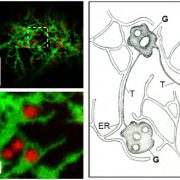
Predominant Golgi-residency of the plant K/HDEL receptor is essential for its function in mediating ER retention (Plant Cell)
Plant Science Research WeeklyCells use a sophisticated sorting system to ensure that proteins get to the proper destination. Proteins that are supposed to stay in the ER carry special tags (KDEL or HDEL, recognized by the ERD2 receptor) that prevent them from being swept along with other proteins out of the ER and into the Golgi.…
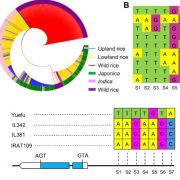
Natural variation in OsLG3 increases drought tolerance in rice (Plant Physiol)
Plant Science Research WeeklyThrough a GWAS study, Yu, Xiong et al. previously identified a transcription-factor encoding gene, OsLG3, with alleles that contribute to increased grain length in rice. In this new work, Xiong, Yu et al. showed that the same alleles of OsLG3 that confers longer grain length also enhance drought tolerance.…
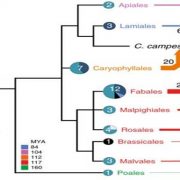
Footprints of parasitism in the genome of the parasitic flowering plant Cuscuta campestris (Nature Comms)
Plant Science Research WeeklyEven without knowing a lot about parasitic plants, you can probably guess some of the insights that come from the first parasitic plant genomic sequence. Because parasitic plants get their nutrients from another organism (functionally, they become heterotrophic), you might expect they would gradually…
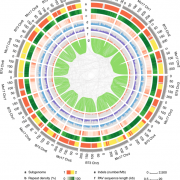
Genome assemblies of maize lines Mo17 and W22: Extensive intraspecific variation, and resource for functional biology (Nature Genetics)
Plant Science Research WeeklyThe maize genome is largely composed of transposable elements, which is one reason maize has been such a powerful genetic model. However, these transposons also mean that there is a great deal of genetic variability between inbred lines, which can contribute to heterosis (hybrid vigor). In a pair of…

Genome-scale sequence disruption following biolistic transformation in rice and maize (bioRxiv)
Plant Science Research WeeklyThe two classic approaches to introducing DNA into a plant’s genome are by harnessing Agrobacterium tumefaciens’ fascinating gene-transfer skill, or by shooting the new DNA into the cell using a “biolistic” (gun) approach. Because of Agrobacterium’s restricted choice of hosts, the biolistic…
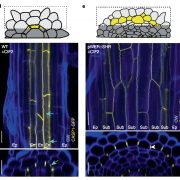
Minimum requirements for changing and maintaining endodermis cell identity in the Arabidopsis root ($) (Nature Plants)
Plant Science Research WeeklyForward-genetic, loss-of-function studies have been invaluable in identifying factors necessary for the formation of the root endodermis. Drapek et al. used an ectopic expression approach to identify factors that are sufficient to produce endodermal-like cells in different root regions. They found that…
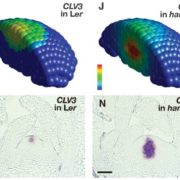
HAIRY MERISTEM with WUSCHEL confines CLAVATA3 expression to the outer apical meristem layers ($) (Science)
Plant Science Research WeeklyThe interaction between transcription factors WUSCHEL (WUS) and CLAVATA3 (CLV3) controls the size of the meristem. Although WUS is known to activate CLV3 expression, their expression domains don’t fully overlap, with CLV3 being restricted to the upper part of the meristem. Previously, in the multiple…

